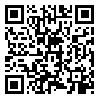Volume 18, Issue 19 (7-2020)
RSMT 2020, 18(19): 23-33 |
Back to browse issues page
Download citation:
BibTeX | RIS | EndNote | Medlars | ProCite | Reference Manager | RefWorks
Send citation to:



BibTeX | RIS | EndNote | Medlars | ProCite | Reference Manager | RefWorks
Send citation to:
Karbalaeimahdi M, Alizadeh M, Minoonejad H. Balance strategies in athletes with chronic ankle instability, Coper and healthy athletes while standing on one leg. RSMT 2020; 18 (19) :23-33
URL: http://jsmt.khu.ac.ir/article-1-459-en.html
URL: http://jsmt.khu.ac.ir/article-1-459-en.html
Abstract: (6400 Views)
Ankle sprain is one of the most commonly damaged lower extremities. More than 70% of people with ankle sprain experience chronic ankle instability. However, some people are well adapted to this damage (Coper people) and do not suffer from chronic ankle instability. The aim of this study was to compare EMG activity of the selected involved muscles in balance control strategies in athletes with chronic ankle instability, coper and healthy athletes during one leg standing. 11 noninjured controls and 13 participants with CAI and 10 ankle sprain ‘copers’ participated in this study. Each participant for 20 seconds maintained their single-foot balance on the 3rd and 12th balance points of Biodex, and EMG activity of the muscles was recorded by the electromyography device during this period.The significance level for all analyses was set as p≤0/05. The results showed Tibialis Anterior, Gastrocnemius and rectus abdominal in the participants with CAI had significantly lower levels of activity than coper group and rectus femoris and Gastrocnemius muscle activity in the participants with CAI had significantly lower levels of activity than control group (p≤0/05). Increasing muscle activity in the Coper group can be due to compensatory mechanisms, which results in greater stability of the trunk and ankle set.
Received: 2021/01/4 | Accepted: 2020/07/15 | Published: 2020/07/15
| Rights and permissions | |
 |
This work is licensed under a Creative Commons Attribution-NonCommercial 4.0 International License. |







